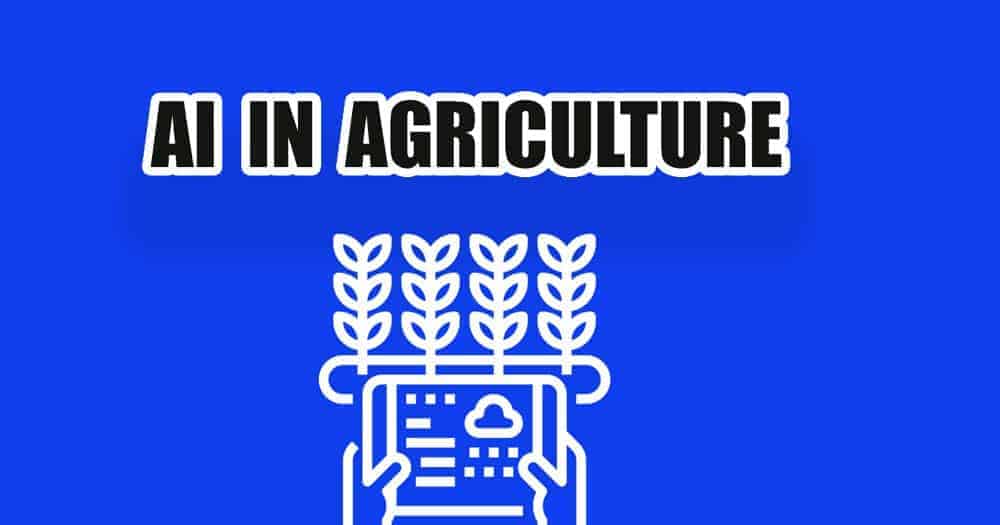AI in Agriculture
According to a report by Intel, roughly 74% of all environmental sustainability business decisions are made based on reports generated by AI. Agricultural decisions are no stranger to data sciences, especially now that we face one of the biggest challenges as a species; global warming.The Earth is 1.5 degrees centigrade hotter than it was supposed to be in 2020, and the frequency of natural disasters has also increased as a result. Agriculture has been affected rather adversely because of this, even in developed countries.Artificial intelligence seems to be a viable way out not just in making the environment more sustainable, but also boosting agricultural productivity and efficiency of crops. Methods such as ‘smart agriculture’ that include precision farming and implementing sensors in the fields have been widely adopted over the years. By 2020, the global market value of precision farming equipment and technique is estimated to be $6.43 billion, compared to $2.81 billion in 2018.
AI in Agriculture: Herbicides & AI
Organizations throughout the globe have strived toward minimizing human interaction (and in turn reducing costs) when it comes to farming with the help of agricultural robotics. In their initial phase, they were programmed to do specific tasks at specific intervals.With the implementation of AI in these robots, they now perform their function on their own, improving processes with the help of ML algorithms within. A prime example of this is the Weed Control function in robots by Blue River Technology Inc.There are over 250 weed species resistant to herbicides, which directly lead to an estimated loss of $43 billion to farmers in the US. These weeds grow uncontrollably, stealing resources from crops, and finding even deeper roots in the process. Farmers do not just lose their crop, but also end up having to replace the soil with a new one and enrich it.Blue River Technology has developed an algorithm in an agricultural robot that has a small camera installed on a sprayer, targeting only the weed plants in a cotton field. The robot is called See & Spray. The goal is to spray only on the weeds themselves – which not only saves costs by reducing the usage of insecticide but since the spray is concentrated in one place, it prevents herbicide resistance as well. According to the manufacturer, the See and Spray robot reduce herbicide costs by 80%!In the first step, a camera in front takes images and analyzes each image at least 20 times, comparing it to over 1 million images in its library.

Once identified, AI recommends which herbicide to use. And then comes the second step; spraying. The robot automatically adjusts the nozzles based on the size and location of the target, spraying the respective herbicide on the detected weed.
AI in Agriculture : Robotics is used in Crop Harvesting
California and Arizona farmers faced tremendous losses over the past few years due to a shortage of laborers. Harvest CROO Robotics came up with a solution for this; the strawberry harvester. This is particularly helpful for Florida, which is considered the ‘strawberry capital’ of the US with over 10,000 acres of strawberries.According to Harvest CROO Robotics, its harvester can replace 30 human laborers, harvesting 8 acres per day. The robot has 16 individual picking robots under it and spans over 6 plant beds at a time. The robot is guided by vision (a camera) that identifies strawberries with 90% accuracy. The camera is guided by AI, which takes 8 seconds to pick all the strawberries on a single plant. Then, it takes roughly 1.5 seconds to move on to the next bed and pick out its strawberries. The harvester does not just help pick strawberries but also plant them.It lays black plastic on raised mounds to promote water runoff and continues punching 16 holes at a time for seeds as it passes along. Each seed’s location is stored in memory so that when it is time to harvest, the robot knows exactly where to return. ML implementations keep polishing the AI within based on timing and conditions thereafter.
AI in Agriculture – Robotics is used in Crop & Soil Health Monitoring
A plant is only as healthy as the soil it is in. Deforestation and increasing temperatures worldwide mean a significant reduction in the quality of soil and therefore threaten food security. Soil deterioration and erosion are leading to a loss of approximately $44 billion dollars every year.PEAT, a German-startup has developed Plantix that identifies defects and deficiencies in soil with the help of detailed soil structure and foliage analyses. Software algorithms correlate current foliage with regular patterns, fruit production, and even pests to identify any diseases or problems with the soil.These images are captured by humans and submitted, who then get a detailed analysis of the sample along with actionable strategies and techniques to implement for better soil health. PEAT claims that the software can detect any issues with 95% accuracy.With the help of Plantix, precision agriculture is becoming more and more affordable since the software does not require any remote sensor. Instead, the whole algorithm is reliant on the user and their devices. Although this introduces a certain margin for user error, making decisions based on data science applications via Plantix is still more reliable than by eyeballing it.That is the only limitation that has thus far been noted for Plantix, but if users do have sensors in the field and reliable data-gathering hardware, this limitation can be overcome. Plantix does have competitors as well, notably CropDiagnosis that perform a similar function, helping AI mitigate soil defects and facilitating the transition toward smart agriculture.
AI in Agriculture – Robotics is used in field Monitoring
A utility that was mostly employed by the construction and the insurance sector has also found its way into the agricultural sector; aerial mapping and 3-D modeling of fields with drones. The idea is to give farmers a detailed look at their field from a bird’s-eye-view and understand where crops need attention, how much yield they can produce this year, and address any storage and transport needs before harvesting.
This is known as DroneDeploy and is the brainchild of a San Francisco startup.
Users can use their smart phones or their PCs to launch a commercially available drone, giving them an automated path to follow. New images are compared to older ones and AI gives a detailed analysis on the health of their crop. From the foliage all the way to weeds and soil structure, everything is analyzed in-depth by AI algorithms, which are then sent to the farmer.Another AI-based technology that offers a somewhat similar solution is SenseFly’s eBee. There are many versions available, but the gist of these tiny drones is to offer crop scouting solutions and eliminate human error from it.This is a fixed-wind UAV (shaped like a plane) and therefore is quicker to inspect larger sites. The vegetation is captured in near-infrared band to get better insight into the health of crops. The AI-aspect of these drones is not just limited to flying itself and taking photos, but it can also create workflows for automated tractors to treat, harvest or sow seeds automatically.








